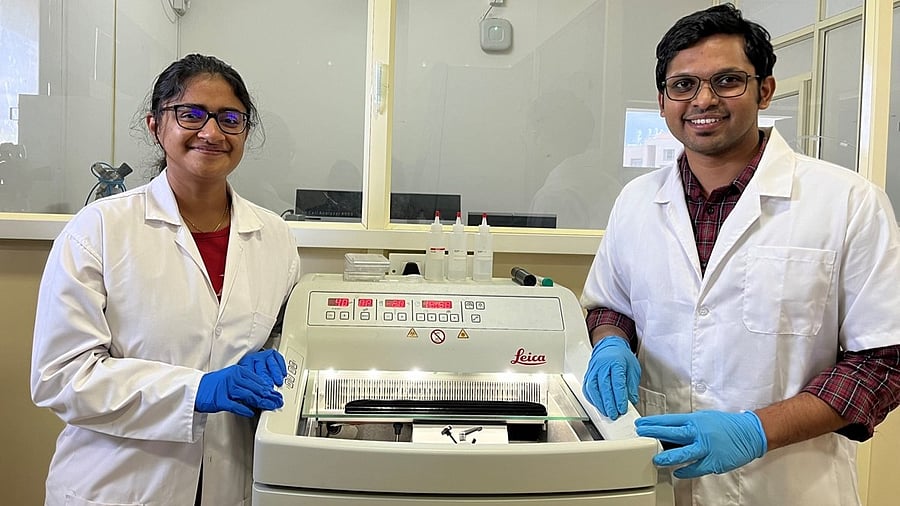
Pic caption: Vijaya V Vaishnavi (L) and Vishal K Gupta, lead authors of the study.
Credit: IISc
Bengaluru: Findings from new research at the Indian Institute of Science (IISc) are set to improve the understanding of tuberculosis and help refine its treatment.
A team of researchers at IISc’s Department of Bioengineering (BE) has designed a novel 3D hydrogel culture system that mimics the mammalian lung environment, to study how TB bacteria infect lung cells and test the efficacy of therapeutics used to treat the disease.
Mycobacterium tuberculosis (Mtb) is a dangerous pathogen that primarily infects the lungs. In 2022, according to WHO, the pathogen affected 10.6 million people and caused 1.3 million deaths.
Current culture models that study Mtb infection – typically, monolayered culture plates that do not accurately mimic the 3D microenvironment inside the lungs – are limited in their scope. The 2D culture plates are also extremely hard compared to the soft lung tissues. Rachit Agarwal, Associate Professor at BE and corresponding author of the study, made a “rock vs pillow” analogy.
IISc noted that the microenvironment experienced by cells in such 2D culture is “vastly different” from the extracellular matrix (ECM) surrounding lung tissue.
“In a tissue culture plate, there are no ECM molecules, and even if a very thin layer of ECM is coated on these plates, the lung cells 'see' the ECM on one side at best,” Vishal Gupta, PhD student at BE and first author, said. The study was published in Advanced Healthcare Materials.
The novel 3D hydrogel culture is made of collagen, a key molecule in the ECM of lung cells. The researchers studied the interaction between the Mtb and human macrophages (immune cells involved in fighting infection) in the collagen and over 2-3 weeks, tracked how the bacteria progressed to infect the macrophages.
Through three weeks, the mammalian cells stayed viable in the hydrogel, a significant improvement on current cultures that sustain them only for 4-7 days. “This makes it more attractive because Mtb is a very slow-growing pathogen inside the body,” Agarwal said.
RNA sequencing of lung cells that grew in the hydrogel revealed that they were more similar to human samples, compared to those in traditional culture systems. The researchers tested the effect of pyrazinamide – a common drug given to TB patients – and found that even a small amount (10 µg/ml) of the drug was effective in clearing out Mtb in the hydrogel culture.
Agarwal said the setup proved that the 3D hydrogel mimicked the infection better. The team has filed an Indian patent for the 3D culture.